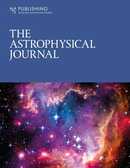Accepted paper at Astrophysical Journal
Prediction of soft proton intensities in the near-Earth space using machine learning
30.08.2021
Authors
Elena A. Kronberg, Tanveer Hannan, Jens Huthmacher, Marcus Münzer, Florian Peste, Ziyang Zhou, Max Berrendorf, Evgeniy Faerman, Fabio Gastaldello, Simona Ghizzardi, Philippe Escoubet, Stein Haaland, Artem Smirnov, Nithin Sivadas, Robert C. Allen, Andrea Tiengo, Raluca Ilie
Abstract
he spatial distribution of energetic protons contributes towards the understanding of magnetospheric dynamics. Based upon 17 years of the Cluster/RAPID observations, we have derived machine learning-based models to predict the proton intensities at energies from 28 to 1,885 keV in the 3D terrestrial magnetosphere at radial distances between 6 and 22 RE. We used the satellite location and indices for solar, solar wind and geomagnetic activity as predictors. The results demonstrate that the neural network (multi-layer perceptron regressor) outperforms baseline models based on the k-Nearest Neighbors and historical binning on average by ~80% and ~33\%, respectively. The average correlation between the observed and predicted data is about 56%, which is reasonable in light of the complex dynamics of fast-moving energetic protons in the magnetosphere. In addition to a quantitative analysis of the prediction results, we also investigate parameter importance in our model. The most decisive parameters for predicting proton intensities are related to the location: ZGSE direction and the radial distance. Among the activity indices, the solar wind dynamic pressure is the most important. The results have a direct practical application, for instance, for assessing the contamination particle background in the X-Ray telescopes for X-ray astronomy orbiting above the radiation belts. To foster reproducible research and to enable the community to build upon our work we publish our complete code, the data, as well as weights of trained models.
Further description can be found in the GitHub project.
Preprint at arXiv


